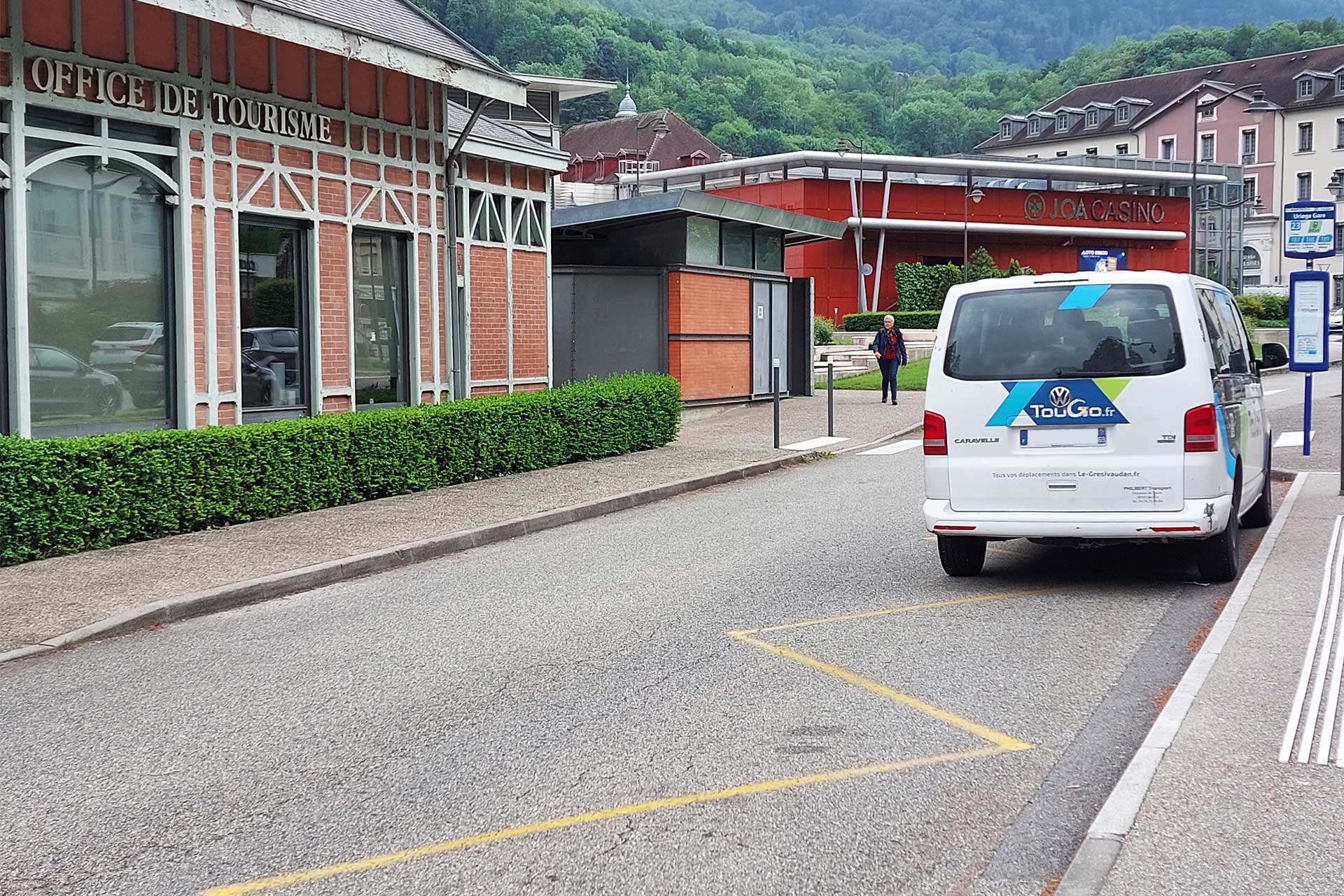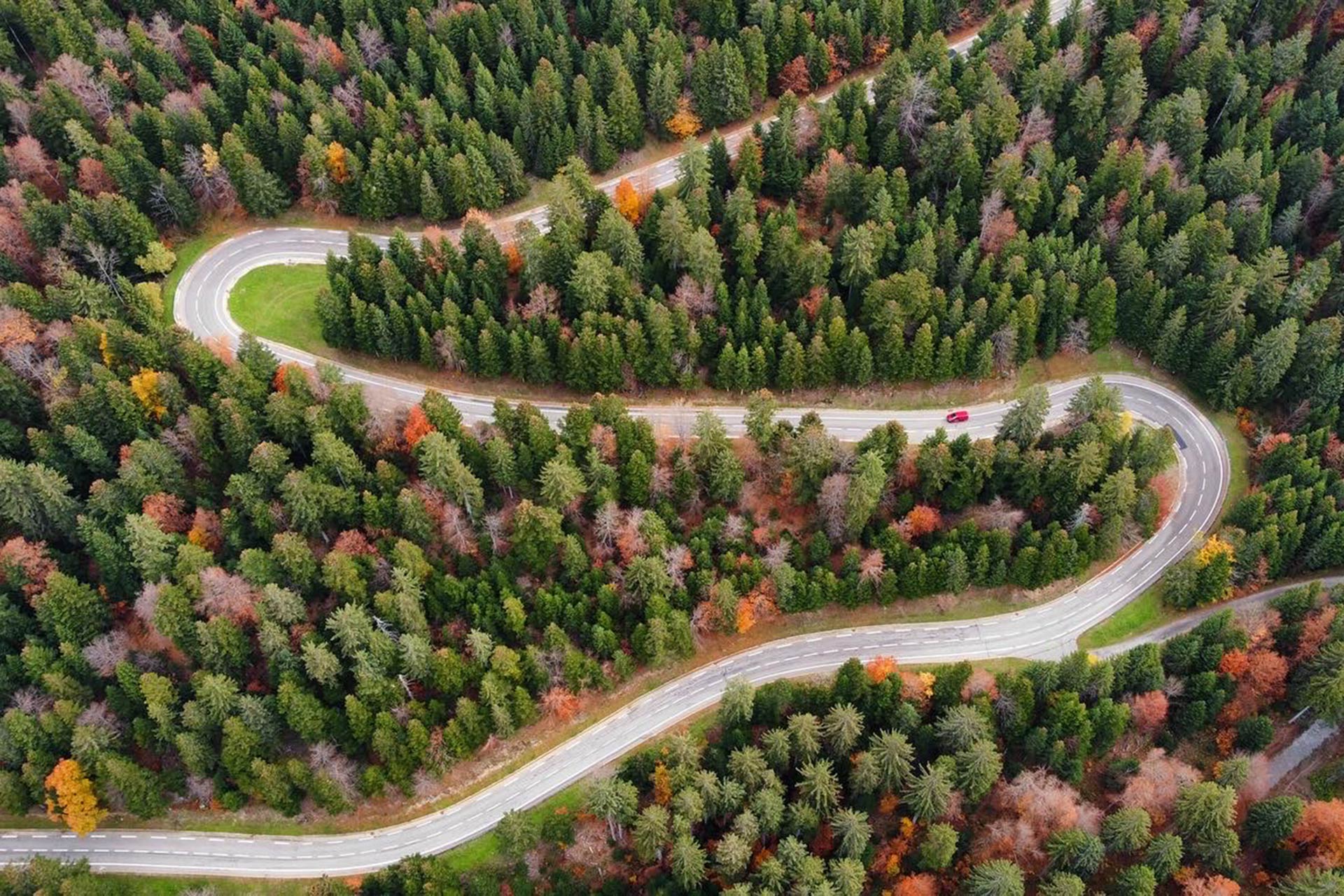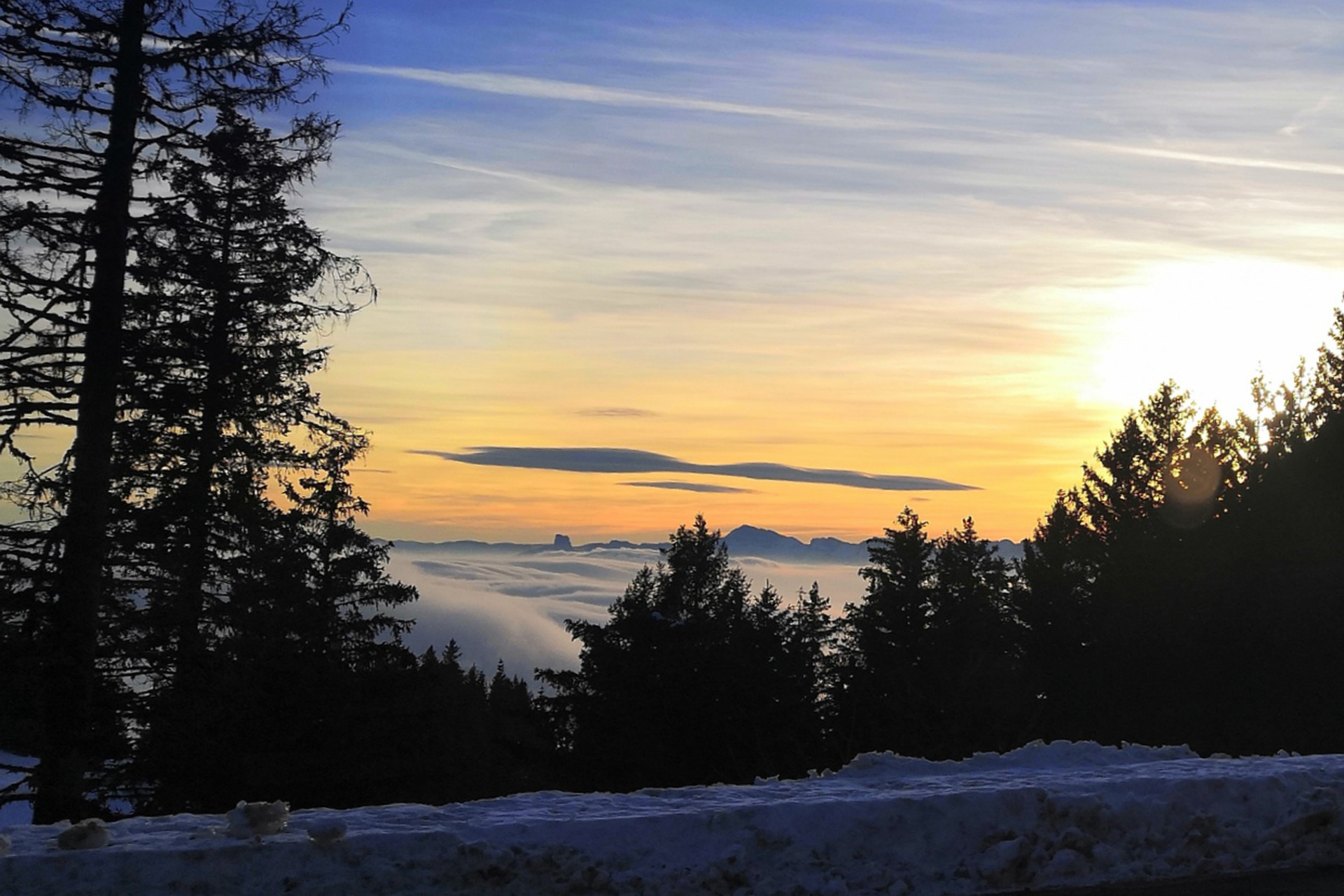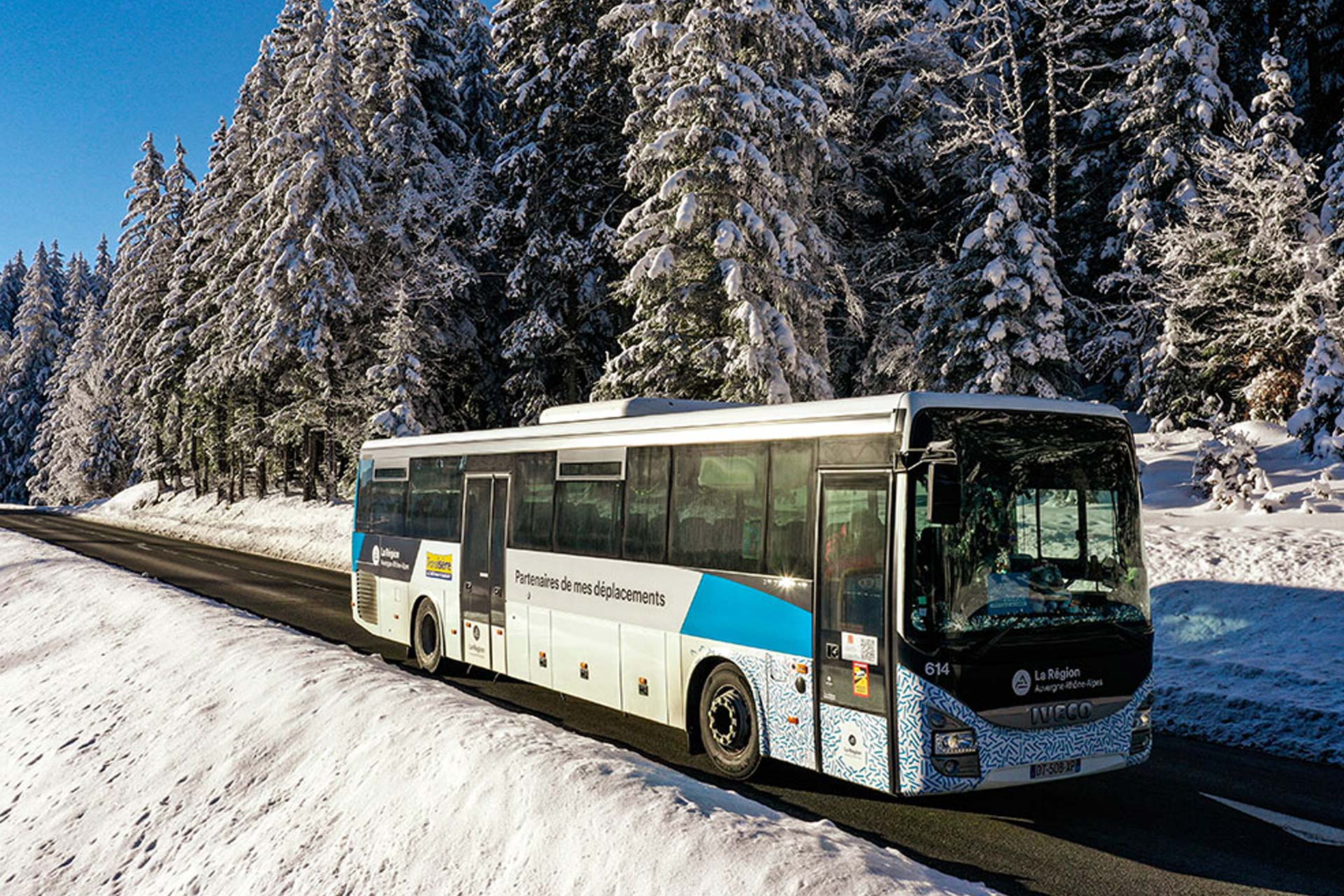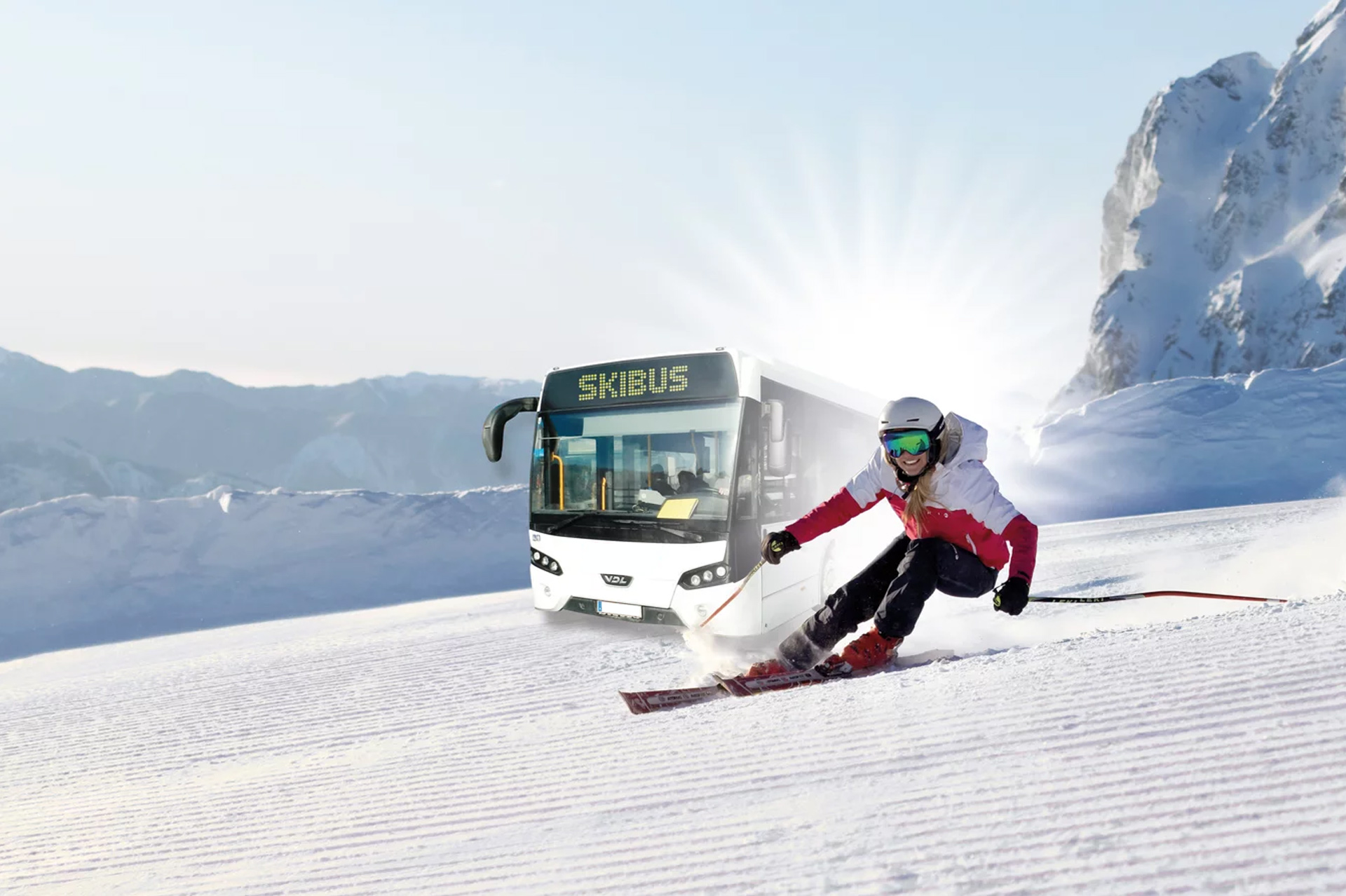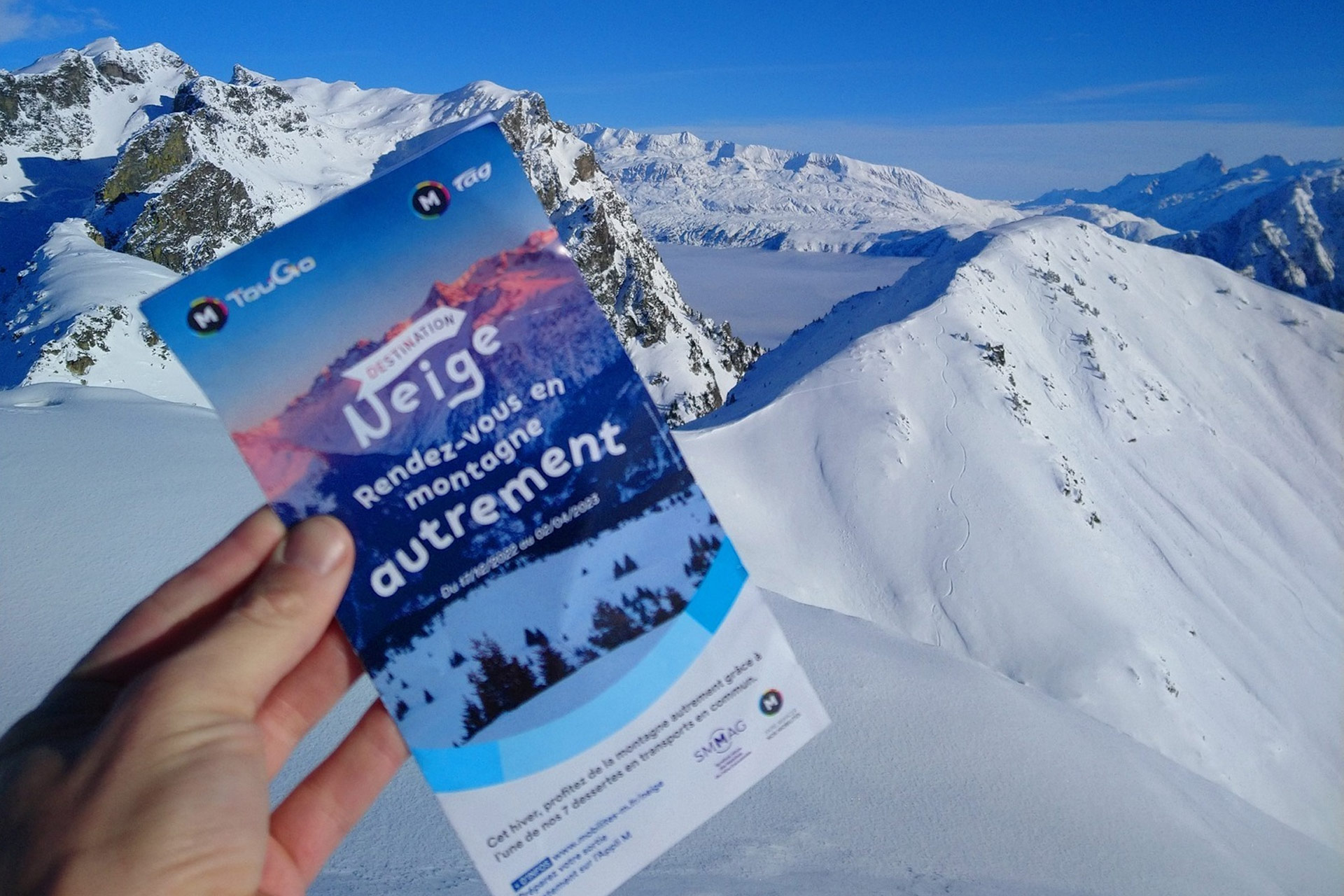3 good reasons to take the bus to come to Chamrousse
Presentation
Eco-mobility in the spotlight!
It's time to discover or rediscover the mountains and in particular transport in a different way, here in the sustainable mobility version.Is the bus too expensive? Wrong. Completely wrong.
Do you like the mountains? Do you like days, weekends or holidays, but you have never come by public transport before? You'll like to try the bus to come to Chamrousse!
And what if it was finally an opportunity for you? An opportunity to discover the mountains in a different way, an opportunity to test other means of transport, but also perhaps to rediscover yourself?
The top 3 reasons to come to Chamrousse by bus!
1) Promoting alternative mobility to the car
No more driving constraints on a mountain road with many bends and no more worries about parking, frost, snow and special equipment required from November to March... with the bus.There are 3 main bus stops that serve the different centres of the Chamrousse resort: Chamrousse 1650 - Recoin, Chamrousse 1750 - Roche Béranger and Chamrousse 1600 - Arselle plateau.
And several public transport lines serving the resort:
- Regular bus service all year round: N93 to/from Grenoble bus station or Gières train station (merging the former T87, Transaltitude and Skibus/Estibus 707 bus routes)
- Bookable service all year round (excluding weekends and public holidays) : Flexo 57 to/from Uriage (former TouGo Transport on Demand - line G701)
- Internal resort shuttle service during the winter tourist periods: free shuttle service between the resort hubs (to/from Chamrousse 1750 - Roche Béranger, Chamrousse 1650 - Recoin and Chamrousse 1600 - Arselle plateau/Nordic area).
✔ Good plan: a bus that goes up to Chamrousse all year round for locals, excursionists and holidaymakers
❤ Little extra: participate in the fight against sedentary lifestyle, so in addition to doing good to your environment, it also participates in your good health
2) Admire the landscape
A chance to take the time (and not everyone can), to enjoy the view and what a view, changing according to the seasons and the altitude, first urban, then forest, to finish in the mountains.Contemplating the light between the trees and the fir trees, perhaps even having the chance to admire the sunrise or the sunset, or an animal crossing the road in the middle of the forest (wild boar, doe...) or a local (cyclist, mountain biker, walker, mushroom picker...).
Or even take the opportunity to take a nap and let your imagination run wild to dream about the landscape with your eyes closed!
✔ Good plan: between 5 and 6 o'clock in the evening in winter to admire the moonrise behind the mountain or the sunset over the valley
❤ Little extra: to discover snow in winter, mushrooms in autumn, ferns in spring and flowers in summer
3) Save money
In view of energy costs, especially fuel prices, public transport is less expensive, especially if you are travelling alone or in pairs. In addition, it is less polluting and avoids wear and tear on your personal vehicle. On the other hand, they can take longer to travel and have more restrictive timetables.Round trip Grenoble - Chamrousse (1h30 and 62 km) :
- thermal car: about 12€ of fuel, 60 cents of wear and tear and about 16 kg CO2 of carbon footprint
- electric car: about 2€ of electricity and 7.4 kg of CO2 footprint
- bus (N93): approx. 12€/person and approx. 2.2 kg CO2 carbon footprint
Round trip Lyon - Chamrousse (3h58 and 286 km) :
- thermal car: about 60€ (including 26€ tolls and 52€ fuel), 3€ wear and tear and 66 kg CO2 carbon footprint
- electric car: about 8.80€ of electricity and 30 kg of carbon footprint
- bus Lyon - Grenoble + Grenoble - Chamrousse (Blablabus + N93 bus): approx. 25€/p and approx. 8.8 kg CO2 carbon footprint
Round trip Uriage - Chamrousse (50 minutes and 40 km) :
- thermal car: about 7€ of fuel, 40 cents of wear and tear and 9,4 kg CO2 of carbon footprint
- electric car: about 1.20€ of electricity and 4.6 kg of carbon footprint
- bus (Flexo 57 or N93): from 2€ to 6€/p and approx. 1.2 kg CO2 carbon footprint
Indicative data: for a petrol city car, €1.87 per litre and 0.2 kg of CO2 per km, for an electric city car, €0.206 per kWh, 15 kWh/100 km and 0.1 kg of CO2 (construction and use) and for a bus, 0.1 kg of CO2 - Sources: Via Michellin and Ademe
✔ Good plan: there are all-inclusive offers like "Skibus" combined ticket with transport and package included from Grenoble
❤ Little extra: in exchange for proof of your N93 bus transport ticket, you can benefit from a -20% discount on your pass. In winter: 4-hour and full-day downhill ski pass / In summer pedestrian pass (hiking, via ferrata, Panoramic Park...) and mountain bike pass: one way, return, 4-hour and 1-day
If it is not possible to take public transport for the whole journey, don't hesitate to mix car and bus, bike and bus or even carpool...
Of course, the bus is also a constraint, so if the car is really the only solution for your journey, here are some practical tips:
Of course, the bus is also a constraint, so if the car is really the only solution for your journey, here are some practical tips:
- Drive while consuming less: maintain your car well and regularly check the pressure of your tyres, do not overload the vehicle unnecessarily, drive slower and adopt a flexible driving style, maintain a stable speed as much as possible and avoid unnecessary acceleration, change gears as soon as possible (2000 revolutions for diesel and 2500 for petrol), switch off your engine when you stop (for stops of 30 seconds or more generally), limit the air conditioning and do not exceed a 10 degree difference with the outside temperature.
- Load your vehicle properly: Do not exceed the total authorised laden weight (PTAC) with your load and occupants (value indicated on the vehicle registration document), in order not to over-consume, prefer a bicycle rack on the tailgate or tow bar rather than on the roof, place the largest objects at the bottom of the boot and the lightest on top, Do not place heavy and hard objects on the rear parcel shelf or place a separating grid to avoid splashing, deflate all balloons to make them easier to store, do not place large items of luggage behind the backs of the front seats to avoid interfering with the operation of the "whiplash" system, depending on the model, in the event of a rear-end accident.
- Well-inflated tyres use less energy: check your tyre pressure when cold at least once a month and before any long journey. The right pressure contributes to your safety and extends the life of your tyres.
- Each road has its own way of driving to reduce fuel consumption: downhill roads do not require acceleration, only accelerate on a downhill road if it is followed by a significant hill in order to limit re-acceleration once you reach the hill, do not accelerate more than necessary to get over a hill and keep your speed constant.
- Eco-driving is a technique: shift up as soon as possible to reduce engine speed at the same speed, anticipate traffic lights, release the accelerator as soon as possible before coming to a halt by downshifting each gear, drive smoothly and gently by accelerating gradually and not braking suddenly at the last moment, Activate the "Start and Stop" system of your vehicle if it is equipped with one or, if not, turn off the engine for short stops can help you save fuel, but be careful, as this wears out the starter motor prematurely, as it is not designed to be used too often. Similarly, if you have a turbocharged engine and you have revved up relatively high in the minute before stopping, it is a good idea to use the starter motor.
Bonus - a little lexicon
- What is the difference between a "bus" and a "coach"? A bus is used for transportation from one point to another in a city, while a coach is used for transportation from one city to another.
- What is "public transport"? A mode of transport that allows several people to travel at the same time, such as bus, coach, shuttle, taxi, train, tram/metro, carpooling, and even cargo bike...
In your daily life, take public transport #MoveLessPollution
Going from 130 to 110km/h on the motorway reduces your fuel consumption by 20% #LowerPollutionMovement
Think about carpooling #LowerPollutionMovement
Bus lines timetables:



